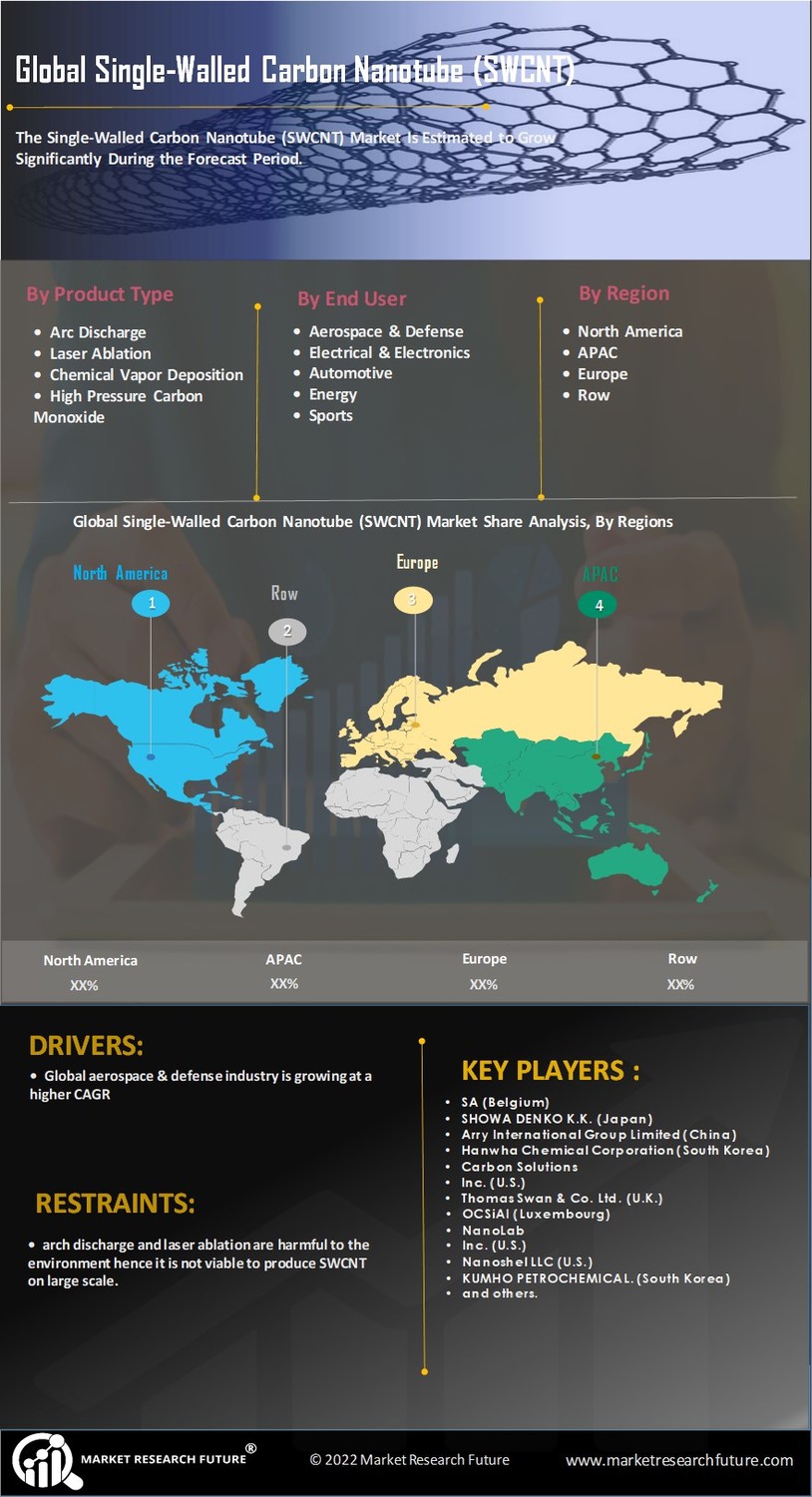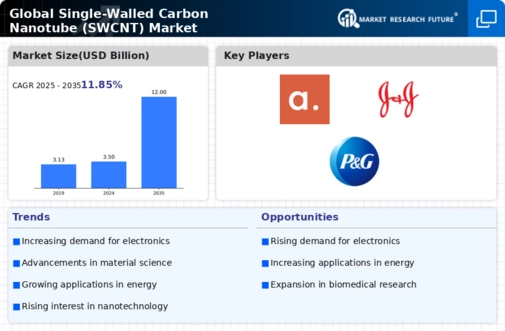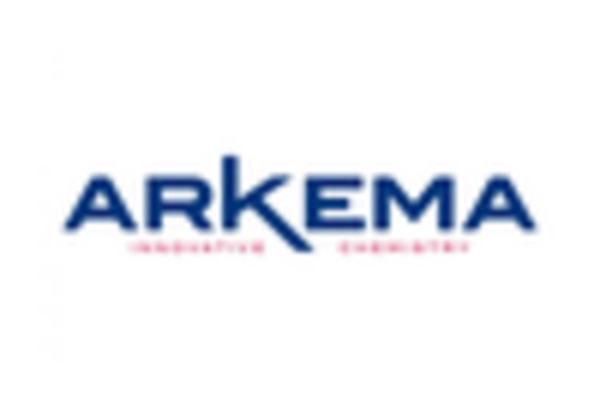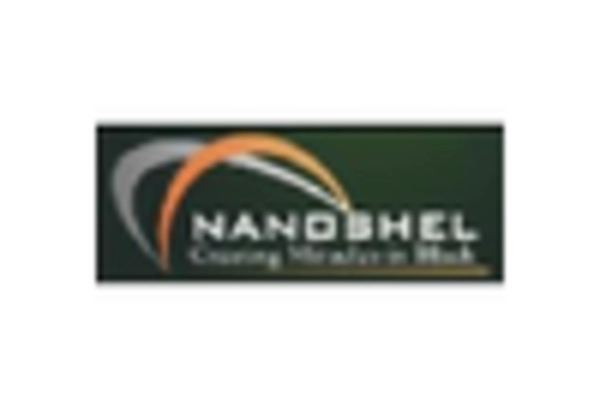Expansion in the Electronics Sector
The electronics industry is experiencing a paradigm shift towards miniaturization and enhanced performance, driving the demand for advanced materials like single-walled carbon nanotubes (SWCNTs). These materials are utilized in various applications, including transistors, sensors, and conductive films, due to their superior electrical properties. The Global Single-Walled Carbon Nanotube (SWCNT) Market is poised for growth as the electronics sector expands, with market analysts projecting a substantial increase in the adoption of SWCNTs in flexible electronics and wearable devices. The market for flexible electronics alone is expected to reach several billion dollars by the end of the decade, indicating a significant opportunity for SWCNT integration in next-generation electronic devices.
Innovations in Biomedical Applications
Biomedical applications of single-walled carbon nanotubes (SWCNTs) are gaining traction, particularly in drug delivery and imaging technologies. Their unique properties, such as high surface area and biocompatibility, make them suitable for targeted drug delivery systems and as contrast agents in imaging. The Global Single-Walled Carbon Nanotube (SWCNT) Market is likely to see increased investment in research and development as healthcare providers and researchers explore the potential of SWCNTs in improving therapeutic outcomes. The global market for nanomedicine is projected to grow at a CAGR of around 12% over the next few years, suggesting a promising future for SWCNTs in medical applications and a potential increase in market share.
Growth in Renewable Energy Technologies
The transition towards renewable energy sources is driving innovation in energy storage and conversion technologies, where single-walled carbon nanotubes (SWCNTs) play a pivotal role. Their high conductivity and large surface area make them ideal for use in supercapacitors and batteries, enhancing energy storage capabilities. The Global Single-Walled Carbon Nanotube (SWCNT) Market is expected to benefit from the increasing demand for efficient energy storage solutions, particularly as the global push for sustainable energy intensifies. The market for energy storage systems is projected to exceed hundreds of billions of dollars by the end of the decade, indicating a substantial opportunity for SWCNTs to contribute to advancements in energy technologies.
Rising Focus on Environmental Sustainability
As industries worldwide prioritize sustainability, the demand for environmentally friendly materials is on the rise. Single-walled carbon nanotubes (SWCNTs) are being explored for their potential to reduce the environmental impact of various applications, from construction to electronics. The Global Single-Walled Carbon Nanotube (SWCNT) Market is likely to see growth as companies seek to replace traditional materials with SWCNTs, which can offer enhanced performance with a lower carbon footprint. The global market for sustainable materials is projected to grow significantly, with estimates suggesting a CAGR of over 8% in the coming years. This trend indicates a shift towards greener alternatives, positioning SWCNTs as a viable solution in the quest for sustainability.
Increasing Applications in Aerospace and Defense
The aerospace and defense sectors are increasingly adopting advanced materials to enhance performance and reduce weight. Single-walled carbon nanotubes (SWCNTs) are recognized for their exceptional strength-to-weight ratio and electrical conductivity, making them ideal for applications in aircraft and military equipment. The Global Single-Walled Carbon Nanotube (SWCNT) Market is likely to benefit from this trend, as manufacturers seek to incorporate SWCNTs into composite materials for structural components. The market for aerospace composites is projected to grow significantly, with estimates suggesting a compound annual growth rate (CAGR) of over 10% in the coming years. This growth indicates a robust demand for innovative materials, positioning SWCNTs as a critical component in the future of aerospace technology.


















Leave a Comment